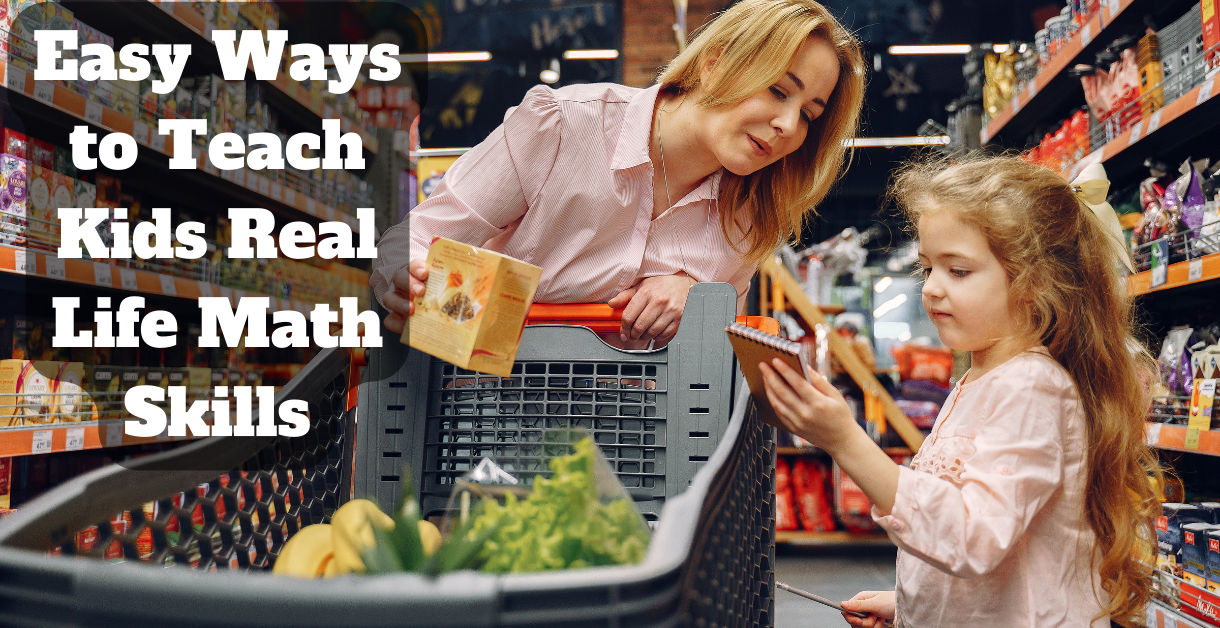"When will I ever use this in real life?" If I had a nickel for every time I heard this when I was teaching math to my kids, I'd be rich. Here are some ways we helped our children see math applied in everyday situations.
Around the House:
* Home improvement projects are a wonderful way to incorporate math practice. For example, use measurement skills and area formulas to determine how much flooring is needed to replace tile or carpet or how much paint is needed to paint walls then calculate how much it will cost.
* Have kids determine the cost of electricity used per month and graph daily electricity usage by reading the meter. (instructions for reading a meter) Take it one step even further and challenge kids to calculate the cost to run various appliances. (Click here for some how-tos)
* Using a gallon or 5-gallon bucket, experiment with volume by seeing how much it takes to fill a tub, sink, or kiddie pool. Then have the kids use volume formulas to figure this out (or visa-versa) and see how close they were.
* Planning a garden takes more than just choosing the right plants. Plot out a garden space based on how much room plants need to grow. (Find great information at this site for kids.)
In the Kitchen:
* Recipes are a delicious way to sharpen math skills. Use a favorite recipe and have them divide it in half, double or triple it. Challenge your child to look at the number of servings and then determine how much the recipe would need to be decreased or increased for a certain number of people.
* Encourage your child to decide how to cut food into pieces to feed a certain number of people.
* Who doesn't love a party? Have the kids plan a party, deciding on the food and decorations, create a shopping list and determine the cost.
* Build nutrition skills by teaching children about calorie, fat, salt and sugar consumption. Have them track this information for a day or longer and tally up the information.
Shopping:
* There were many times when shopping was our math for the day. While grocery shopping, I had the kids check unit pricing on the tags to determine the best deals and calculate whether those "Buy One, Get One" offers were really worth it.
* Before heading out, the kids would help plan out the menu, then go through the various store circulars to find the best pricing, creating a grocery list as they went. I would then have them estimate the cost for the week's groceries. They actually enjoyed seeing how close they could get.
* While out bargain hunting for other things like clothing and school supplies, they would also practice percentages, figuring out how much we were saving during a sale and the cost of something on sale.
* When we were in the market for a new car, we had them research and compare prices for new and used vehicles and compare value based on makes, models and options.
Travel:
* Planning trips, whether for vacation or a field trip, helped my kids with time and distance skills. In addition to asking them to determine how many miles we would be travelling, we also encouraged them to figure out how long it should take and how much gas we would need as well a what it might cost.
* One year we left it up to our kids to plan and budget a weekend trip. We gave them a set amount of money they could spend, and they chose the location, where we would stay, and what we were going to do based on the budget constraint. (We ended up having a wonderful time camping at the beach, fishing and playing Putt-Putt golf. 😉)
Weather:
* My daughter had at one time wanted to be a meteorologist, so naturally we incorporated weather tracking in our math studies. She would create graphs showing daily temperatures and rain amounts. She also practiced converting temperatures from Fahrenheit to Celsius and visa-versa.
Other:
* When the kids were old enough to work, prior to them actually job hunting, we encouraged them to compare job pay and benefits to how much it would cost them to get to and from work as well as any uniform requirements and other job-related costs they would incur.
* Once they were employed, we taught each one of them how to do their own taxes on paper.
* Because our kids were interested in sports and participated in sporting programs, just for fun, occasionally we would have them plot and graph sports statistics. We even had them determine their own player stats for the season.
* Playing outside can be infused with great math practice and kids probably aren't even aware of it. Most sports use some type of geometry whether it be the shape of the playing field or in determining how to sink a goal or hit a ball. Kids can practice counting skills playing jump rope or hide-and-seek, number recognition with hopscotch and so much more.
Now the next time your child asks when they are ever going to use math, you are armed with ideas to show them exactly how they will use it.


